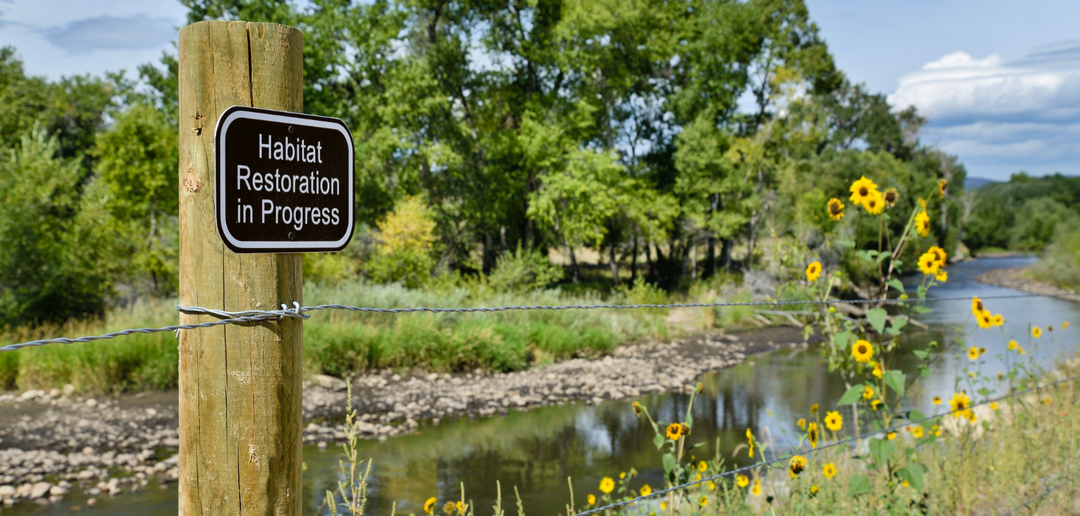All Posts
When a stream system becomes disrupted, it sets off a chain reaction that affects water quality, wildlife habitats, and the surrounding environment. The balance of a naturally stable stream allows it to maintain its dimension, pattern, and profile while moving sediment effectively. However, when this equilibrium is lost due to human activity or natural events, the stream can degrade or aggrade, leading to significant ecological and functional issues. This blog explores stream restoration strategies, focusing on the natural channel design approach to bring disturbed waterways back to stability.
Understanding the Causes of Stream Degradation
Successful stream restoration begins with identifying the root causes of degradation. Human activities, such as urban development, agriculture, and deforestation, often increase sediment loads or interfere with a stream’s ability to handle its flow. These changes can result in erosion of streambanks, accumulation of sediments, or loss of critical habitats.
Earn 4 PDH units while diving deeper into techniques for stream restoration.
Degradation can also stem from shifts within the watershed itself. Increased runoff from impermeable surfaces, for example, raises water velocity and volume, intensifying erosion and destabilizing stream channels. To craft effective restoration strategies, it’s crucial to understand these upstream influences and their impact on the stream’s physical and ecological systems.
What Is Stream Restoration?
Stream restoration aims to re-establish the structure, function, and self-sustaining behavior of a stream system as it existed prior to disturbance. It’s a multi-faceted process that may involve addressing watershed disturbances, stabilizing streambanks, and improving in-stream habitats. Restoration measures may include reshaping unstable stream reaches, installing protective structures, and using vegetation to enhance stability and ecological value.
The ultimate goal of stream restoration is to create a system that can transport sediment, manage flows, and maintain its ecological integrity without recurring intervention. One widely used method to achieve these goals is the natural channel design approach.
The Natural Channel Design Approach
Natural channel design replicates the forms and processes of undisturbed stream systems. This approach considers the stream’s dimension, pattern, and profile while prioritizing the movement of water and sediment in equilibrium. By emulating natural systems, the method not only restores physical stability but also supports biological diversity and function.
Key Principles of Natural Channel Design
- Mimicking Natural Patterns
A stable stream maintains its width, depth, and meandering path over time. Natural channel design involves reshaping the channel to reflect these characteristics, ensuring it can handle fluctuating flows and transport sediment effectively. - Stabilizing Streambanks with Vegetation
Vegetation plays a dual role by holding soil in place and providing shade and habitat for aquatic species. Restoration efforts often include planting native species along the streambanks, reducing erosion risk and enhancing the stream ecosystem’s resilience. - Creating Functional Floodplains
Floodplains allow streams to expand during peak flows, reducing erosion and controlling sediment transport. Restoring or reshaping functional floodplains creates additional space for water storage and helps prevent downstream flooding.
Benefits of the Approach
The strength of natural channel design lies in its ability to integrate stability with ecological enhancement. Streams rehabilitated through this technique are more likely to remain stable over the long term while providing habitats and clean water for wildlife and human use.
Techniques for Stream Restoration
Stream restoration encompasses an array of techniques, adaptable depending on the severity of degradation and the specific challenges of the site.
- Channel Realignment
Streams impacted by straightening or altered flow pathways often lose their ability to distribute energy evenly, leading to erosion and instability. Returning the stream to its natural meandering form restores its function and reduces degradation. - Erosion and Sediment Control
Controlling sediment and erosion is critical during the restoration process. Measures include constructing new channels in the dry, installing silt barriers, and stabilizing soil stockpiles. These approaches minimize the movement of pollutants into the stream during construction. - Using Bioengineering Techniques
Natural materials, such as logs, rocks, and live plants, are employed to build structures like weirs, revetments, and root wads. These enhance streambank stability and provide shelter for aquatic life, blending structural and ecological benefits. - Watershed Management
Addressing upstream causes of degradation is essential for sustainable restoration. This might involve altering land use practices, improving stormwater management, or reforesting watershed areas to reduce runoff and sedimentation.
Construction Considerations
Restoration involves careful sequencing to minimize environmental impacts. Each project segment should be stabilized upon completion before moving to the next, limiting exposure of vulnerable soils to erosion. Techniques like diverting stream water around active construction areas ensure sediment and pollutant levels are controlled throughout the process.
Why Stable Streams Matter
A stable stream is more than a water channel; it’s a critical component of the landscape that supports ecosystems, provides water supply, and mitigates flooding. When restored effectively, streams regain the ability to self-sustain, maintaining their physical structure and ecological function without constant human management.
Restored streams also improve water quality, protect wildlife habitats, and reduce downstream risks like flooding or sediment build-up. For communities, these benefits translate into a more resilient environment, capable of withstanding natural and human-induced changes.
Building Stronger, Healthier Systems
Stream restoration reflects a commitment to preserving and enhancing our natural resources. By adopting a natural channel design approach and integrating erosion control measures, we can restore disturbed stream systems to their former health and balance. These efforts not only benefit the streams themselves but also contribute to broader watershed management goals, fostering sustainable practices that protect our shared environmental heritage.
For anyone working in environmental conservation or water management, stream restoration represents an opportunity to combine science, engineering, and ecological stewardship for lasting impact.
Register for ‘An Introduction to Stream Classification & Restoration’ to earn 4 PDH credits and learn even more on this topic.
• sign up
Get the latest CE news from Edcetera
Restoring Balance to Disturbed Streams
When a stream system becomes disrupted, it sets off a chain reaction that affects water quality, wildlife habitats, and
Read moreEdcetera Sets New Standard in Engineering CE with Cutting-Edge Innovation
Pewaukee, WI, June 13, 2025 - Edcetera proudly announces the launch of Edcetera Engineering, a groundbreaking continuing
Read moreEdcetera Acquires Popular Exam Prep Provider for Engineers-in-Training
Edcetera expands its footprint in engineering education with the acquisition of exam prep solution PrepFE Waukesha, WI –
Read more

